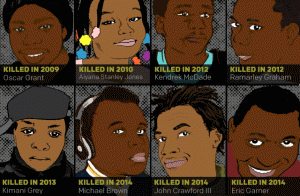
“But can’t nobody protect our sons, not even the president.” While Mr. George, an African American resident of a large east coast city, uttered these words years ago, they seem oddly prescient given President Obama’s recent comments about the death of Michael Brown. Last summer, as Ferguson responded in protest to Darren Wilson’s murder of an unarmed African American young man, I gave the following comments on the book in which Mr. George appears, sociologist Alice Goffman’s, On The Run: Fugitive Life in an American City at the Annual Meeting of the American Sociological Association. For a summary of the book (and the controversy that surrounds it) please see here, here, here and here. I am sharing my comments now, in the wake of the grand jury investigation and an emerging national discussion about racial inequality, because it is important to think seriously about the criminalization of young, black, poor, urban men. It is important to think seriously about how these young men are represented in academic research as well as popular culture. It is important because how we know what we know about race, gender, and class shapes solutions to inequality. These reflections are part of a way in to that conversation:
Comments* on Alice Goffman’s On the Run: Fugitive Life in an American City Author Meets Critics, American Sociological Association Meeting, 2014
In honor of what I found to be one of the most compelling parts of On The Run – the raw, present, seemingly unfiltered voices of the residents of 6th Street, I’d like to start with a quote from Mr. George. He is someone Professor Goffman highlights as a “clean” resident of 6th street. In talking about his grandsons Mr. George says, “They say it’s changed now with Obama. It’s a new era. But can’t nobody protect our sons, not even the president. I’m telling you, if I was thirty years younger I’d be praying for girls. If I had a son I’d be done lost my mind now. I’d start mourning and praying the day he was born.” (80).
Professor Goffman spends On The Run detailing the lives of Mr. George’s grandsons and their friends, the 6th Street Boys. In many ways, the stories in On The Run validate Mr. George’s concerns, outlining the way in which the lives of young urban African American men are shaped by mass incarceration and state surveillance. The experiences of the young men of 6th street are deeply circumscribed by state surveillance and control – such that their lives are characterized by immobility even as they are on the run, a contradiction that defines their existence.
Professor Goffman’s fieldnotes are so vivid, the stories she shares so dramatic, that many readers may find themselves drawn in, as I was, to the lives of these young men – the dramatic, breathless escapes from the police, the games played with younger brothers to teach them necessary evasion skills, the dramatic and suspenseful wars between the 4th street boys and the 6th street boys, the adventure of the drives to visit friends and relatives in prison, the tediousness of waiting for loved one’s numbers to be called in state institutions. Indeed readers may feel, though many likely have never experienced first hand, the adrenaline rush of those escapes, the cockroaches crawling on one’s skin in a drug addicted mother’s house, the pain and fear of having ones body physically punished by police, the particular pacing of a day, a week, a life shaped by one’s son’s interactions with the criminal justice system. While we are reading the book we are all on 6th street. These dramatic, evocative and compelling stories, invite the reader to deeply feel what it is like to be “on the run” while simultaneously being immobilized, frozen in place by state surveillance…
…On the Run is one of those books that gives us the chance to have a dialogue about the role of ethnography, its relationship to social theory, and the position of the ethnographer in his or her research, reflexivity and relations with the researched…I suggest that the beauty of this book is in the details, and that linking these details more directly to social theory and empirical context would provide deeper, more contextualized understandings of these stories and fend off misinterpretations, readings of the data likely not intended by Professor Goffman.
…Take, for example the story about Tim catching a case. 13 year-old Tim left school in the middle of the school day. His teacher followed him out of school and on to the street. Tim threw rocks at the teacher, though none of them hit her, but she did apparently twist her ankle in pursuit. For this infraction Tim was not suspended, expelled, or given detention. He was charged with assault.
Like so many of the stories in On The Run this one appears in a larger narrative that brings the reader into the courtroom as well as to the post-courtroom celebration of the fact that Tim’s “victim” didn’t appear to press charges in court. We feel the tension, the boredom and the relief along with Tim’s community. I would like to suggest that this story, compelling as it is, is one of those stories that, much like a single brush stroke in an impressionist painting, needs context. That is, any particular dab of paint may be a color that touches one’s soul, but a viewer cannot comprehend that stroke as one of many that makes up a pond of water lilies until one steps back and looks at that particular point of color in the context of other brush strokes.
What other brush strokes might be important here? What sort of theoretical frame might shed light on Tim’s experience? What sort of empirical context could help us understand his story? I suggest we look to some of the ways scholars understand and analyze the experiences of young men of color in urban areas. For example, in his book Punished: Policing the Lives of Black and Latino Boys, Victor Rios brings us a compelling analysis of the ways in which young men of color experience state surveillance. He argues that multiple institutions in these young men’s lives (schools, community organizations and of course the courts) collude in a process of criminalization, literally producing these young men as criminals regardless of their actual behavior. While Tim was pushed out of the school system of punishment and in to the criminal justice system for throwing a rock, the lives of young men of color in Punished indicate that even if their behavior is seemingly benign, it is difficult for young men to escape similar processes of criminalization – either formally (state level punishment) or informally (through labeling processes).
The case of Ronny in Punished exemplifies this informal process of criminalization. Ronny, a young African American man interviewed for a job and then declined to shake the hand of the white woman who was interviewing him. What was likely perceived as rude behavior by the white woman, to Ronny was logical, drawing on knowledge that white women see black men as physical and sexual threats. He didn’t get the job.
This model of criminalization takes into account both the behavior of those who are criminalized, the responses of those around them and the institutions in which they find themselves. According to this approach it would not really matter whether or not Tim caught a case for throwing rocks, because likely at some point he would be criminalized for something, even if that something was nothing.
To speak to this point, sociologist Ann Ferguson, in her seminal book Bad Boys: Public Schools in the Making of Black Masculinity, describes a process she calls “adultification” distinctly related to intersections of age, gender and race in the criminalization of young men of color. She argues, writing about African American middle school boys, that their “transgressions are made to take on a sinister, intentional, fully conscious tone that is stripped of any element of childish naïveté” (83). Ferguson found that young black boys did not benefit from the “boys will be boys” frame often used to casually excuse white boys’ more socially undesirable behavior, an analysis that is born out by recent findings that African American young men are seen as more adult and dangerous by police (Goff et al 2014). Indeed, in my own research on young men and homophobia I found that African American boys were punished by school authorities for engaging in sexist and homophobic behavior regularly expressed by white boys who were never once punished for it.
Research on school punishment indicates that these gendered and raced processes are widespread, beyond ethnographic findings by Goffman, Ferguson and myself. In general African American students are disciplined more in schools. African American students are overrepresented in so-called “discretionary” expulsions, or expulsions for offenses that are subjectively, rather than objectively judged. Recently Hannon, Defina and Bruch indicated the centrality of intersections of race and gender to these punishment practices. Their research indicates that while skin tone plays a key role in the likelihood of suspension for black girls (i.e., girls with darker skin are suspended at significantly higher rates), African American boys are simply at a higher overall risk for suspension for any infraction regardless of skin tone.
Given that information, let’s pull back the lens on On The Run’s findings. What does it do when we place Tim’s experience in this theoretical and empirical context? It does a couple things.
First it may indicate that whether or not Tim throws a rock at a teacher while skipping school may be irrelevant. He would likely be drawn into the crimininalization process anyway. Focusing on the process of criminalization suggests that Tim’s violent behavior may be less important than the reaction of other actors and institutions which already frame young men of color as dangerous, predatory and criminal. Something that we perhaps saw play out devastatingly in Ferguson Missouri, with the murder of Michael Brown.
Second, placing the vivid and compelling stories in On The Run in theoretical and empirical context may also suggest slightly different interpretations of some of these stories. For instance, the problem of the “manly flaws” explanations provided by the men for their failings. Professor Goffman finds that the men of 6th street sometimes use an updated version of what Leibow termed “manly flaws” to explain their “personal inadequacies.” They could not be a good father, find a good job, finish a degree because they were wanted by the police. They were “on the run.” In this line of thinking, being “on the run” serves as a way to save face. But to return to Ronny’s story about shaking the hand of the white woman, or rather not shaking the hand, we can see a third explanation – the criminalization process. Whether one is actually under state control or not certainly isn’t the only factor that determines one’s ability to perform one’s social role successfully. One can be criminalized without actually being directly subject to state control. To suggest otherwise relies a bit heavily on individualized explanations at the cost of systemic and structural ones.
Finally, placing these stories in theoretical and empirical context raises questions about the nature of ethnography, the role of the researcher and how one writes up one’s ethnographic findings. As I said earlier, one of the strengths of this book is its immediacy. I’m sure I was not alone in the end as tears filled my eyes when Chuck passed away, his too short life a testament to the immorality and injustices of racism, policing, and poverty that defines contemporary America. The rage, helplessness and grief shared by Professor Goffman over her friend’s death immediately called to mind another ethnographer’s experience with death. Renato Rosaldo lost his wife Michelle Rosaldo while she was hiking members of the community they researched. A decade later he reflected on that experience, using psychoanalytic, sociological and anthropological theory to understand, explain his grief and range. The community he had been studying practiced headhunting, a ritual he had a hard time understanding, until he experienced his own personal tragedy. In analyzing his grief (and accompanying rage) years later he was able to understand the strange, the foreign, perhaps what seemed deeply immoral, as familiar, understandable, as perhaps, normal.
This of course, is the job and the challenge of the ethnographer – to render the strange, the foreign, the problematic as familiar. And the familiar – strange, problematic and foreign. What is the role of the evocative story in ethnographic research – the breathless escape from the police? The moment when the cop steps on your neck? The shooting of a friend? Can these stories be rendered in a way that underscores the persistence of inequality, racism, and institutional and personal violence while not reinforcing tropes of the savage, the lawless or the failed man?
Answering these questions suggests that linking ethnographic data to social theory is not merely an intellectual exercise. Rather theory provides context, deepens the analysis and can protect against interpretive distortions. Connecting the compelling evidence from 6th street more intimately to social theory as well as other empirical findings on racism, inequality and gender helps to underscore that these young men are not suffering from their own series of particularly poor choices, but because of their position in larger structural inequalities…
[On the Run] raises important questions about the role of ethnography in examining inequality, racism, punishment and surveillance practices. It highlights the multiple relationships between ethnography and theory. But most importantly, On the Run provides dramatic and compelling evidence for the daily interactional ways in which young urban men of color are surveilled, criminalized and punished.
*These comments are edited. Please email CJ Pascoe at cjpascoe@cjpascoe.org for the full text.


 A young woman in my Sociological Theory class yelled those words as soon as she saw me pull up a clip of
A young woman in my Sociological Theory class yelled those words as soon as she saw me pull up a clip of 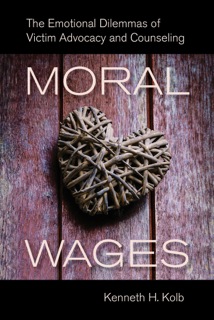 I’ve seen this process firsthand. As a sociologist who spent roughly a year and a half doing ethnographic field work inside an agency that assists victims of domestic violence and sexual assault, one of the most common questions I get about
I’ve seen this process firsthand. As a sociologist who spent roughly a year and a half doing ethnographic field work inside an agency that assists victims of domestic violence and sexual assault, one of the most common questions I get about 
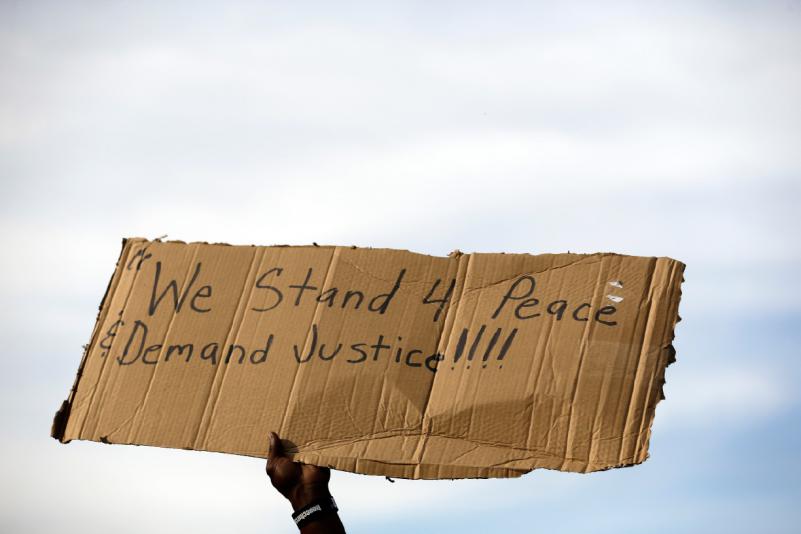
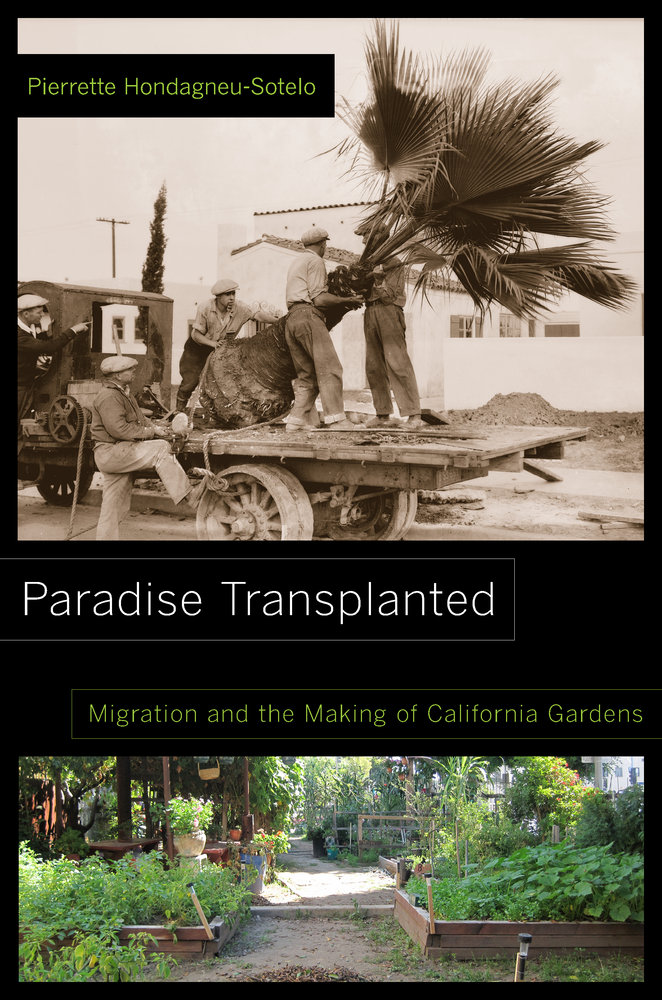
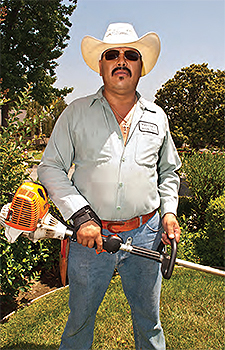


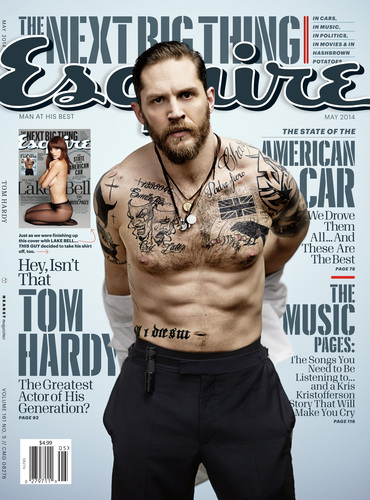


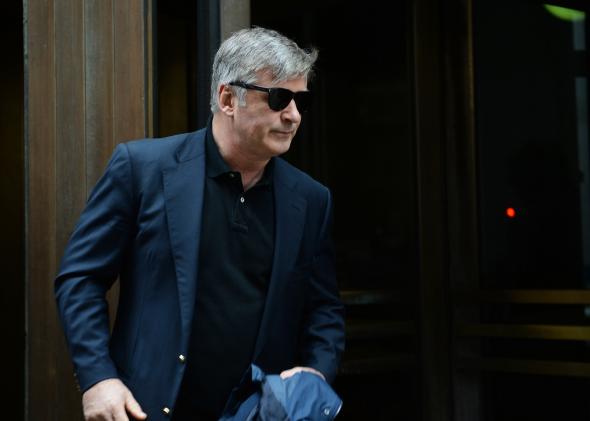
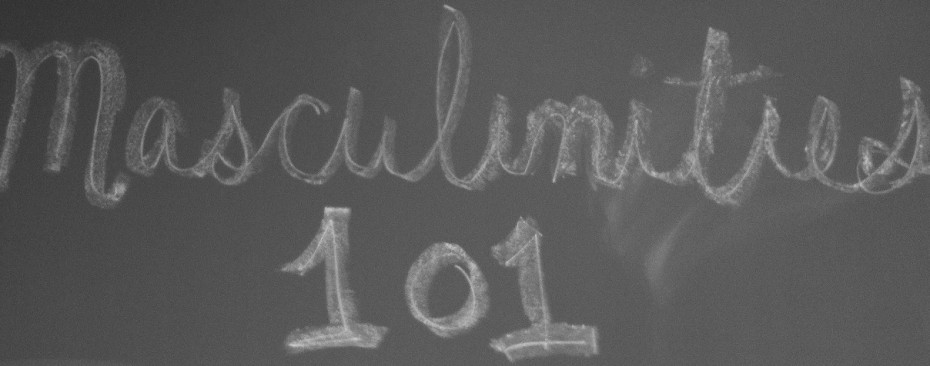 Masculinities 101
Masculinities 101 In addition to being a blog, Masculinities 101 is sponsored by Stony Brook University’s
In addition to being a blog, Masculinities 101 is sponsored by Stony Brook University’s 
